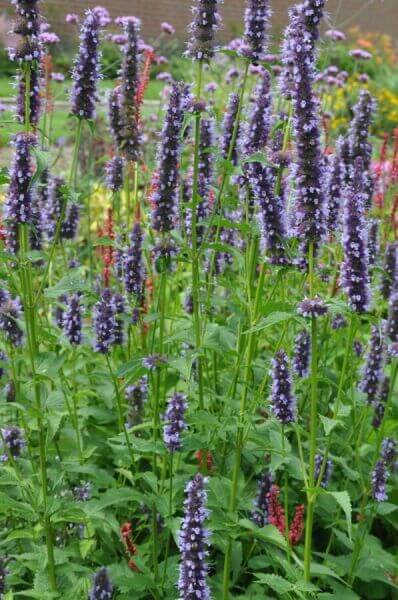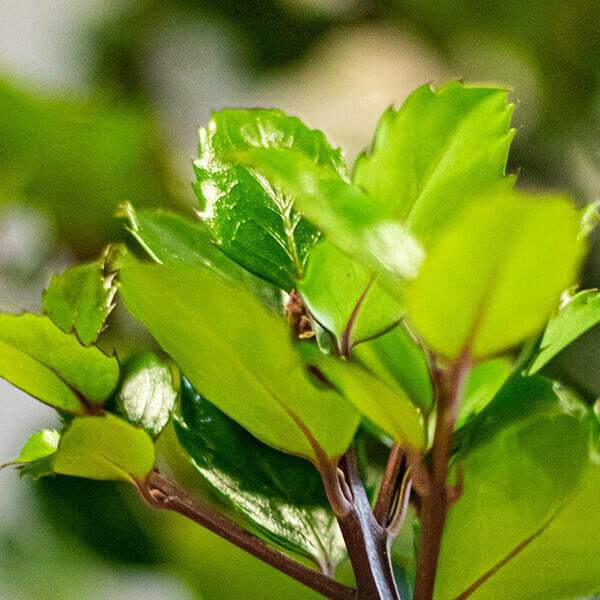Hedging Plants For Mediterranean Gardens
Hedging Plants For Mediterranean Gardens
Blog Article
Hedge Plants For Quick Privacy
Boost your garden's appeal with lavish hedge varieties such as Yew (Taxus), Thuja, Laurel, Photinia, and Bamboo, celebrated for their structural stability and environmental advantages.
Yew and Thuja provide evergreen coverage and winter season durability, while Laurel offers fast growth and broad, fragrant leaves.
Photinia adds seasonal appeal with its dynamic red foliage, and Bamboo provides a low-maintenance, serene atmosphere.
These hedges enhance air quality, decrease sound, and develop tranquil, private spaces.
Correct planting, spacing, and maintenance guarantee energetic development and environmental consistency.
Check out how these lush varieties can elevate your garden's charm and well-being.
Key Takeaways
Change Your Garden With Lush Hedge Ranges
- Select Yew for its thick, evergreen growth and unrivaled durability.
- Go with Laurel for its fast development and broad leaves, ensuring fast personal privacy.
- Choose Photinia for its vibrant seasonal foliage, which turns a striking dark red.
- Use Bamboo for a low-maintenance, winter-hardy hedge with aesthetic appeal.
- Space plants 2-3 per meter and prune routinely for optimum development and health.
Popular Hedge Plants
When changing a garden with lavish hedge ranges, it's important to consider popular hedge plants such as Yew, Thuja, Laurel, and Photinia due to their distinct qualities and benefits.
Yew (Taxus) is highly esteemed for its longevity and dense, green growth, making it a prime choice for enduring landscapes.
Thuja is noted for its evergreen foliage and robust winter resilience.
Photinia includes seasonal vibrancy with red leaves that darken with time, developing vibrant visual appeal.
Laurel uses quick growth and fragrant, broad leaves, ideal for fast personal privacy.
Furthermore, Bamboo is an outstanding choice for ambiance, offering a low-maintenance, winter-hardy choice that improves the garden's aesthetic with its elegant, swaying canes.
These selections cater to a variety of horticultural requirements and choices.
Benefits of Garden Hedges
Garden hedges offer a plethora of advantages, making them a valuable addition to any landscape. These natural barriers are cost-effective to carry out and provide substantial wind security, enhancing air circulation and adding to sound reduction. The thick foliage of hedges like Thuja and Beech makes sure personal privacy by obstructing visibility, developing a secluded and peaceful environment.
Hedges also play an essential role in microclimate guideline, offering a stable environment that promotes plant growth and lessens temperature fluctuations. Their detailed leaf structures filter contaminants, enhancing air quality and contributing to a much healthier garden community.
Additionally, hedges excel in sound reduction, soaking up and deflecting sound waves to lower ambient noise levels. This dual performance of providing both visual and acoustic personal privacy enhances the total serenity and visual appeal of any garden.
Planting and Maintenance Tips
For an effective hedge, careful preparation of the planting area is vital. Ensure the soil has appropriate pH and drain to support strong root development.
Area the plants appropriately for the selected types. Water the hedge frequently during its initial development phase, adjusting as required with seasonal modifications.
Implement a methodical pest control and disease prevention technique, using chemical or organic treatments when needed. Routinely examine for aphids, termites, and fungal infections.
Apply mulch to keep moisture and suppress weeds. Seasonal pruning promotes dense growth and air circulation, necessary for plant health.
Following these standards will assist you cultivate a dynamic, properly maintained hedge that boosts the appeal of your garden.
Spacing and Trimming Standards
Spacing and Trimming Guidelines
Proper spacing and cutting are important for cultivating healthy, visually appealing hedges. Adequate spacing ensures each plant gets adequate nutrients, light, and airflow.
Follow these standards for ideal hedge maintenance:
- Spacing: Position hedge plants 2-3 plants per meter to motivate robust growth.
- Pruning Strategies: Routine pruning is important for maintaining preferred hedge height and shape. Trim brand-new development in summertime and cut down older wood during winter.
- Seasonal Care: Adjust cutting schedules and methods according to seasonal requirements to guarantee plant health.
- Hedge Height: Routinely display and trim to preserve the wanted hedge height and achieve uniform visual appeals.
Adhering to these steps will guarantee your hedge prospers, improving both the appeal and functionality of your garden.
Picking the Right Hedge
Picking the Right Hedge
Choosing the appropriate hedge includes assessing aspects such as fully grown height, foliage density, and ecological resilience. Successful hedge plant choice requires understanding each types' growth characteristics and site-specific adaptability.
For example, Yew (Taxus) uses outstanding longevity and thick growth, while Thuja is notable for its winter season durability. In addition, considering upkeep requirements is crucial; fast-growing types like Laurel or Privet demand routine trimming, whereas low-maintenance alternatives like Bamboo or Ivy might be preferable for those looking for minimal maintenance.
Ecological elements such as soil type, light availability, and moisture conditions need to also assist the selection procedure. This mindful method makes sure the chosen hedges will flourish, supplying both aesthetic and practical benefits to the garden landscape.
Delivery and Planting Advice
To ensure your hedge plants prosper, they ought to be provided by specialized carriers and planted without delay upon arrival.
Follow these vital actions for successful planting:
- Soil Preparation: Enhance the soil with raw material to enhance drainage and nutrient content.
- Planting Depth: Produce a trench two times the width and equal to the depth of the root ball.
- Watering Techniques: Water thoroughly after planting, keeping the soil consistently moist however not filled.
- Mulching: Apply a layer of mulch to retain moisture and reduce weeds.
Consumer Assistance and Service
Given the essential role of prompt help in horticultural pursuits, our consumer assistance team is available six days a week through telephone, email, and social media to provide professional recommendations and promptly resolve any issues. Their devotion to fast action times makes sure consumer fulfillment by resolving questions related to plant health, optimal planting methods, and upkeep schedules.

Accessibility
-------------------
Within 24 hours
This comprehensive support group, reinforced by an outstanding 9.3/ 10 consumer rating, highlights our commitment to improving the gardening experience for every single client.
Frequently Asked Concerns
The Length Of Time Does It Take for Hedge Plants to Establish?
Hedge plants normally need one to three years to become totally established, with the precise period differing by types and growing conditions.
Effective care during this crucial period is important for robust growth. Consistent watering, vigilant weed control, and proper fertilizer application are critical in promoting strong root development.
For example, fast-growing species like Laurel may establish faster, while slower-growing ranges such as Yew may take longer. Persistent maintenance accelerates the establishment procedure, leading to thick and healthy hedges.
What Are the Best Hedge Plants for Privacy?
The question of the very best hedge plants for privacy involves evaluating evergreen and deciduous options.
Evergreen hedges like Thuja, Laurel, and Cypress supply year-round protection, guaranteeing continuous personal privacy.
On the other hand, deciduous hedges such as Beech provide seasonal privacy, shedding leaves in cooler months.
Key maintenance pointers for personal privacy hedges Additional resources include routine cutting, fertilizing in spring, and proper spacing-- generally 2 to 3 plants per meter.
Furthermore, consistent watering and diligent weed elimination are vital for promoting healthy, thick growth.
Can Hedge Plants Attract Wildlife to My Garden?
Yes, hedge plants can bring in wildlife to your garden by supplying vital benefits like shelter, food, and nesting websites, consequently improving regional biodiversity. For example, yew, holly, and laurel are outstanding for attracting birds, while ivy supports a range of bugs.
However, it is necessary to note that there are some disadvantages, such as increased upkeep to manage bugs and regular upkeep. Thoroughly picking and preserving hedge ranges can help balance these drawbacks and benefits, eventually fostering a dynamic and sustainable ecosystem in your garden.
Exist Any Blooming Hedge Plants Available?
Yes, there are flowering hedge plants available that can improve the appeal of your garden.
For example, Elaeagnus, also called Olive Willow, produces aromatic white flowers in the fall, adding a touch of elegance.
Photinia, another popular option, showcases lively red leaves that grow into a rich green, producing a dynamic visual effect throughout the seasons.
To ensure these plants prosper, it's important to practice proper pruning methods and seasonal upkeep, such as cutting brand-new development in the summer season and cutting back in the winter.
These measures will help preserve the health and aesthetic appeal of your flowering hedges.
How Do I Prevent Insects in My Hedge Plants?
To avoid insects in hedge plants, use natural bug control approaches and keep proper hedge care. Introduce advantageous bugs like ladybugs, which take advantage of hazardous insects, to produce a balanced ecosystem.
Regularly inspect your hedges for signs of infestation and quickly remove any affected parts to prevent the spread. Make sure the health of your hedges by using balanced fertilizers and providing adequate water.
Utilize mulching to retain soil wetness and correct spacing to minimize plant stress and promote robust growth. These practices collectively assist in decreasing bug problems and preserving a healthy hedge.
Conclusion
In essence, choosing the ideal hedge ranges such as Yew, Thuja, and Laurel can transform any garden into a tranquil sanctuary. These plants supply year-round plant, improve aesthetic appeal, and deal useful benefits like sound decrease and wind defense.
Correct planting methods, accurate spacing, constant watering, and seasonal trimming are vital for optimum growth.
Reputable delivery services and expert customer assistance ensure a smooth experience from purchase to planting, making it simpler than ever to raise your outside area.
Garden hedges offer a multitude of advantages, making them a valuable addition to any landscape. These natural barriers are cost-efficient to execute and offer significant wind defense, enhancing air blood circulation and contributing to noise decrease. The dense foliage of hedges like Thuja and Beech makes sure privacy by blocking visibility, producing a remote and serene environment.

Pruning Strategies: Routine pruning is vital for maintaining desired hedge height and shape. Cut brand-new development in summer season and cut back older wood during winter.
Report this page